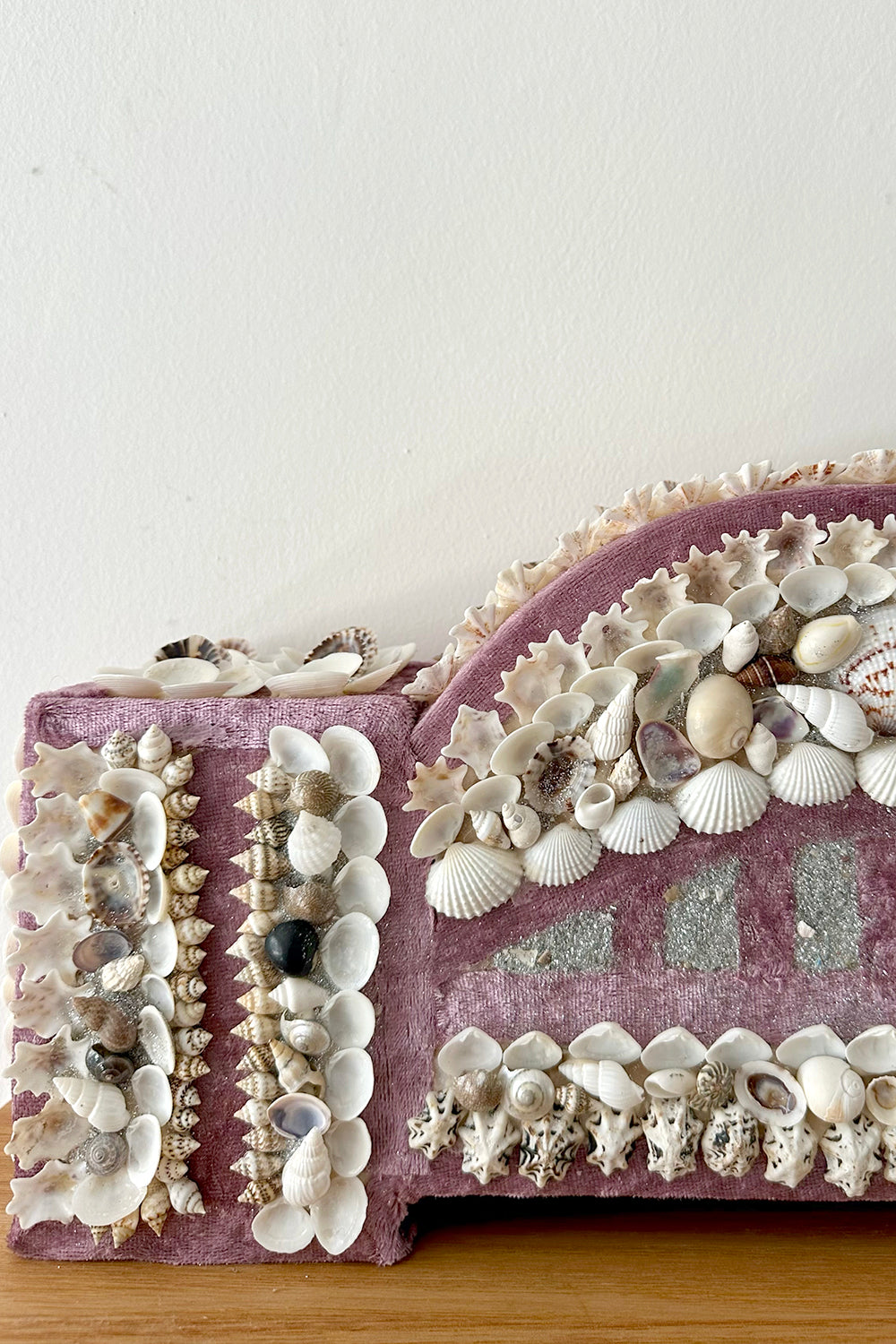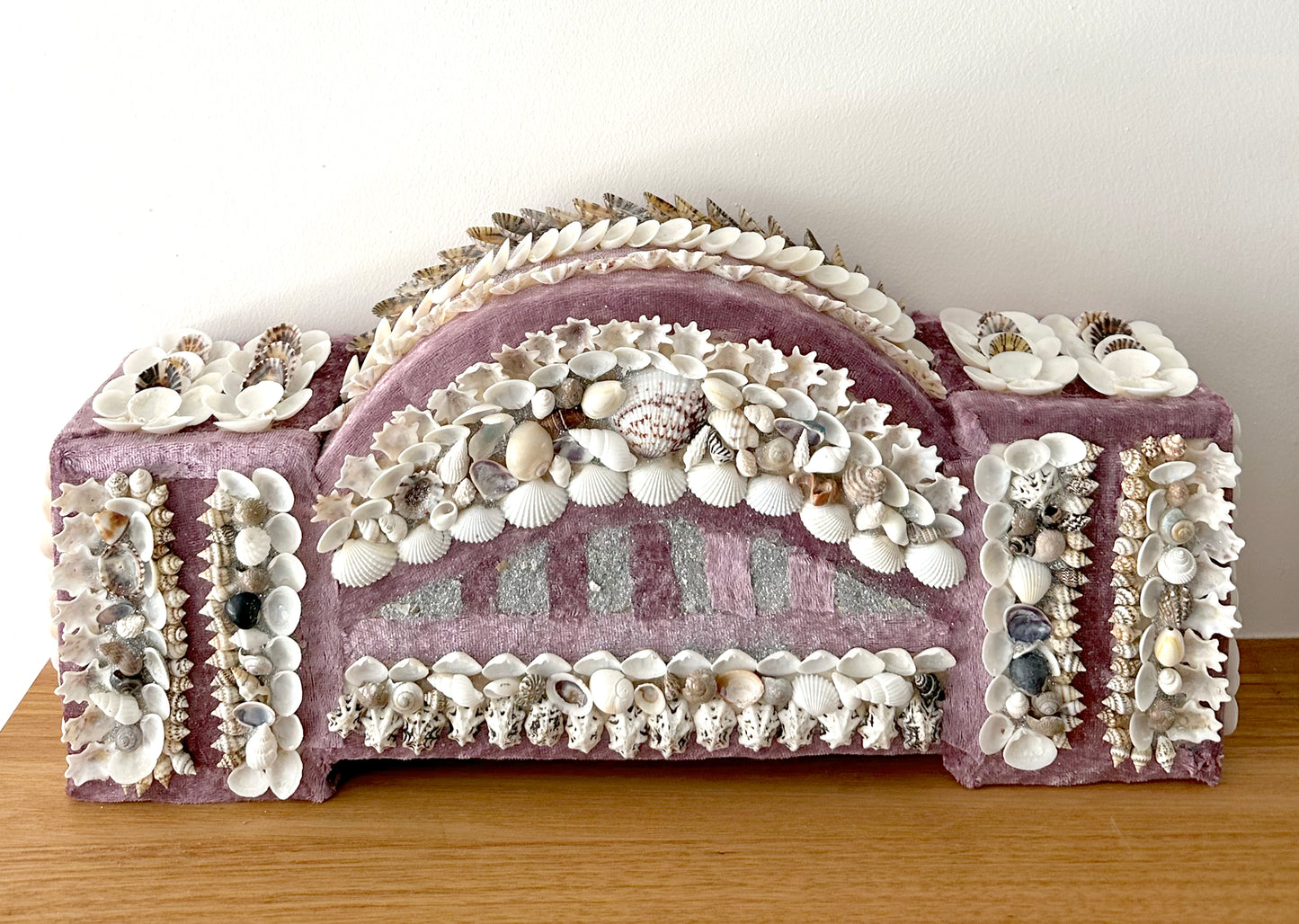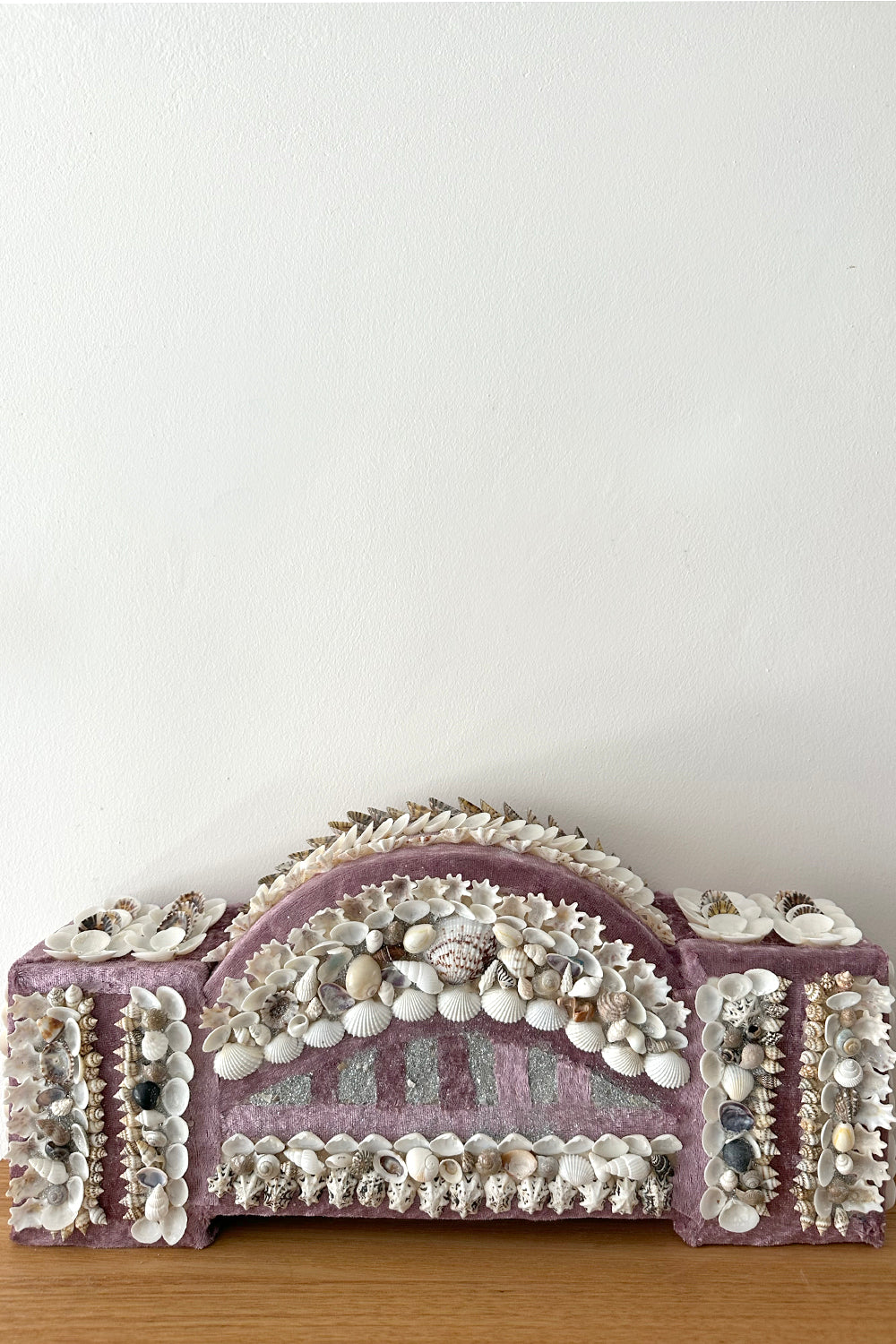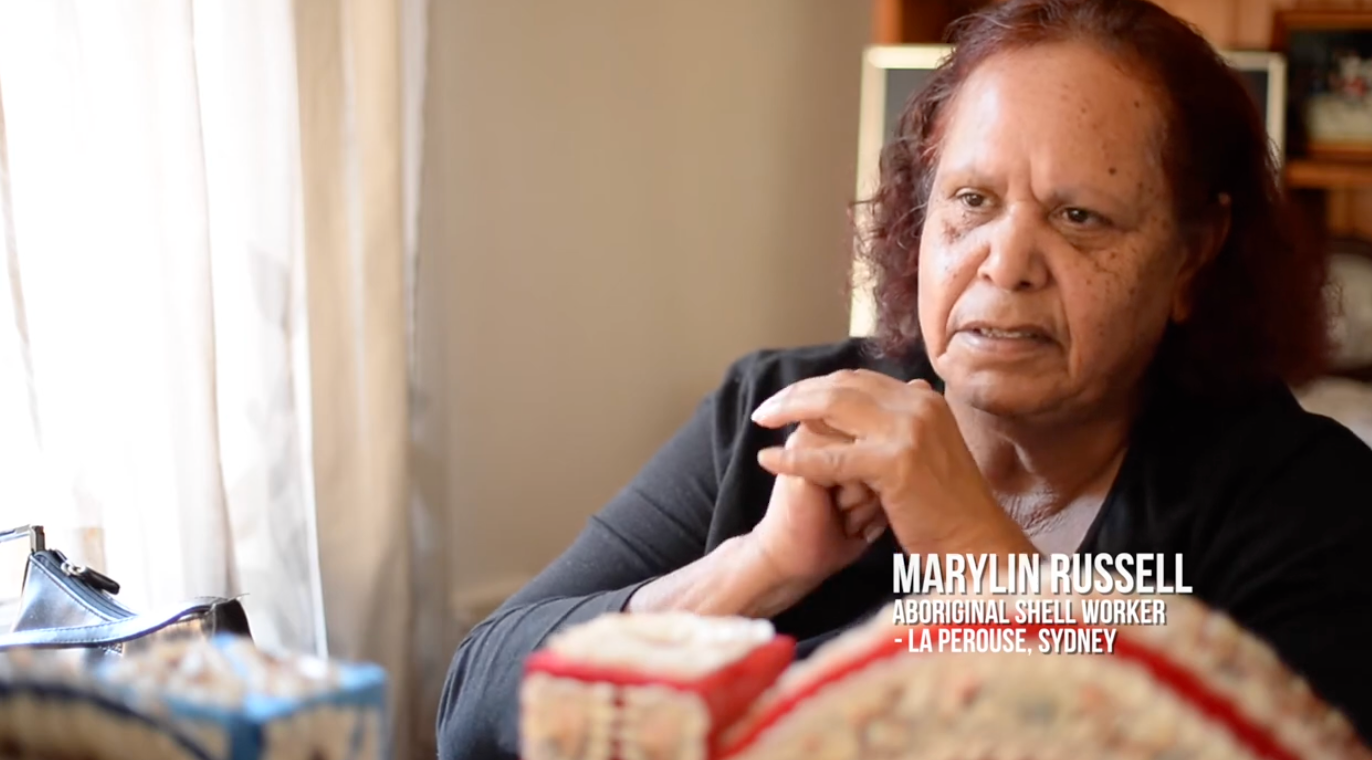Aunty Marilyn Russell, Shellwork harbour bridge (mauve)
Aunty Marilyn Russell, Shellwork harbour bridge (mauve)
Couldn't load pickup availability
Artist: Aunty Marilyn Russell
Title: Shellwork harbour bridge (mauve)
Year: 2024
Materials: Shells, glue, velvet, cardboard & glitter
Size:
Continuing the tradition of shellwork which has been handed down to her from her mother Esme Timbery, Marilyn Russell's work represents her connection to the past and a process of healing. Through these fine art objects, Marilyn keeps Bidjigal women's shellwork tradition alive.
Tracing back to the early 1880s in the La Perouse area, Bidjigal women created similar items that were sold to tourists visiting the area. Prior to this time, Bidjigal people used seashells to make fish hooks, jewellery (for both men and women) as well as sacred objects. Marilyn is ensuring the longevity of this tradition by passing this practice and cultural knowledge to the next generation, just as her mother Esme did.
Originally established in the late 1800s, La Perouse remains one of Australia’s first Aboriginal missions, now deep in the heart of Australia’s biggest metropolis.
In her book Botany Bay: Where Histories Meet, historian Dr Maria Nugent writes about the emergence of the Sydney Harbour Bridge as a curious, but popular design on souvenirs made by First Nations people at La Perouse.
After the bridge opened in 1932, its design appeared on wooden boomerangs crafted by local men, and women made individual models of the structure.
Dr Nugent said earlier shellwork designs, such as baskets originally sold to white suburban women, were remodelled to cater for the tourist market:
The process of the transformation of shell art from Victorian-era curio to a Sydney souvenir was complete when a shell Sydney Harbour Bridge hit the stalls.
Dr Nugent said First Nations women responded to changing markets and over time their work was sold to city department stores and gift shops. One of their biggest markets was American servicemen in Australia during the Second World War.
The sale of souvenirs at La Perouse was one of the main sources of income for First Nations people in the first half of the 20th century.
The tourist industry declined at La Perouse in the 1960s when the tram service and tourist ferry ceased operations. At the same time, First Nations souvenir makers had trouble competing with mass-produced items.
https://australian.museum/blog/science/the-sydney-harbour-bridge-and-the-aboriginal-shellworkers-of-la-perouse/
Share








